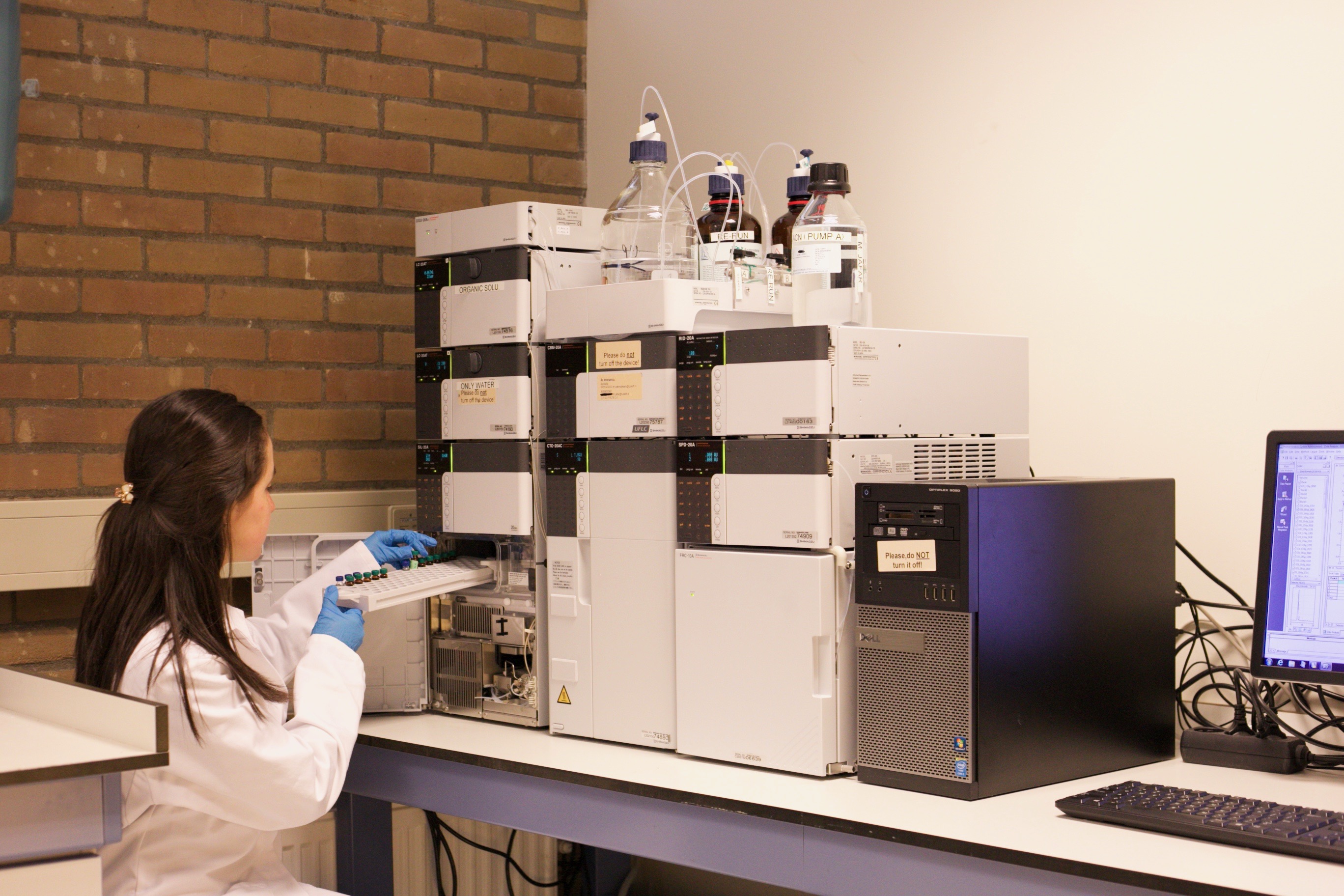High-performance liquid chromatography (HPLC)
High-performance liquid chromatography (HPLC; formerly referred to as high-pressure liquid chromatography), is a technique in analytical chemistry used to separate, identify, and quantify each component in a mixture.
It relies on degas-unit and two pumps to pass a solvent referred to as a “ mobile phase” (e.g. water, acetonitrile, methanol etc.) and sample mixture through a column referred to as a “ stationary phase” filled with a solid adsorbent material, is typically a granular material made of solid particles (e.g. silica, polymers, etc.). Each component in the sample interacts slightly differently with the adsorbent material, causing different flow rates for the different components and leading to the separation of the components as they flow out the column.

HPLC is distinguished from traditional ("low pressure") liquid chromatography because operational pressures are significantly higher (Shimadzu max. 210 bar), while ordinary liquid chromatography typically relies on the force of gravity to pass the mobile phase through the column. Due to the small sample amount (typical 10 up to 100 μl) separated in analytical HPLC, typical column dimensions are 2.1–4.6 mm diameter, and 30–250 mm length. Also HPLC columns are made with smaller adsorbent particles (2–50 μm in average particle size). This gives HPLC superior resolving power (the ability to distinguish between compounds) when separating mixtures, which makes it a popular chromatographic technique. HPLC has been used for research (e.g. separating the components of a complex biological sample, or to quantify the amount of micro pollutants in water).
The temperature (using a column oven) play a major role in the separation process by influencing the interactions taking place between sample components and adsorbent. Due to degree of interactions taking place between the sample components and the adsorbent, this causes each compound to elute at a different time, known as the retention time of the compound. The detector generates a signal proportional to the amount of sample component emerging from the column, hence allowing for quantitative analysis of the sample components. A Computer and software control “ lab solution” the HPLC instrument and provide data analysis. Our system of Shimadzu HPLC contains two detectors UV/Vis and RID.